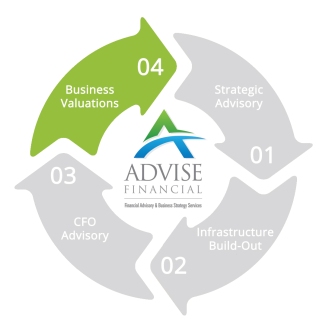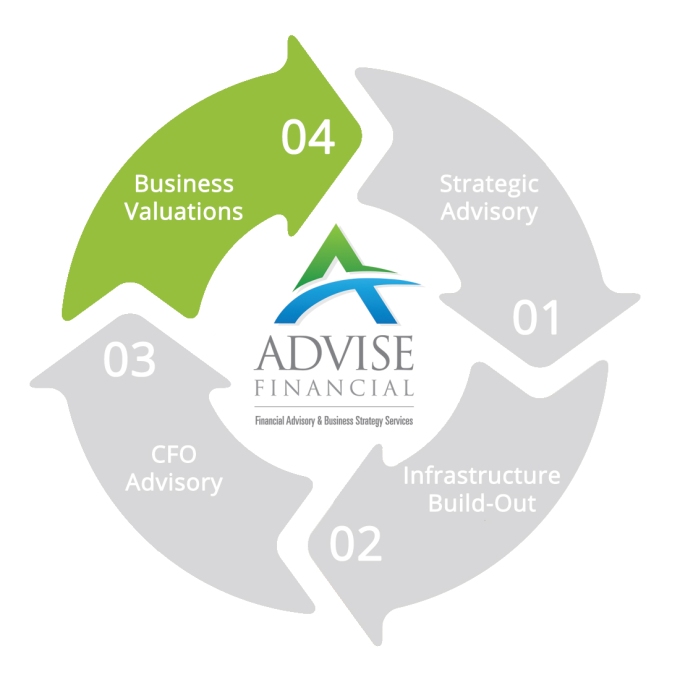 Generally speaking, we all have a pretty solid idea of how much our businesses are worth based on its overall success. Often though we’ll oversell our own ideas to ourselves, and this number will turn out to be quite far from the mark. There may come a time where you’ll need an accurate business valuation. You might find yourself wanting to sell your company, and you need to know just how much it’s really worth. Perhaps you have to know it for your taxes, or you might even be dealing with a litigation. These are all cases where you need to have an accurate valuation.
Generally speaking, we all have a pretty solid idea of how much our businesses are worth based on its overall success. Often though we’ll oversell our own ideas to ourselves, and this number will turn out to be quite far from the mark. There may come a time where you’ll need an accurate business valuation. You might find yourself wanting to sell your company, and you need to know just how much it’s really worth. Perhaps you have to know it for your taxes, or you might even be dealing with a litigation. These are all cases where you need to have an accurate valuation.
There are five steps involved in getting a proper valuation:
- Preparing and Planning
- Financial Adjustments
- Choosing Valuation Methods
- Take time to Apply the Method
- Concluding the Value
Step 1: The Importance of Prepping and Planning
Organization is key, so you should understand why you want this valuation, and the gather all the relevant data. You should understand that the valuation isn’t an absolute. They are a representation of approximately what the company is worth.
Things to keep in mind before you proceed:
- Look closely at how the business operates. Is the structure tax-efficient, and can you improve it? How are the sales doing lately? How big is your company demographic?
- Business valuation is not just an exercise in numbers where you subtract your liabilities from your assets, it’s also based on the value of your intangible assets.
- Be picky with your appraisal team. Doing it yourself can be taxing, and therefore increase the likelihood of errors occurring. You’ll want a good accountant, and then possibly an attorney and broker.
Generally speaking, company owners normally sell for the sake of making a profit. In this situation, they’re treating the sale more like an auction, waiting for the highest bidder to come along and seal the deal. What you want to know is what would be a reasonable amount to expect from a potential buyer, otherwise known as the fair market value.
In some cases a rival may approach in an attempt to buy, even if the owner hasn’t said they’re selling. These companies may be looking for resources to supplement themselves. This synergistic buyer is measuring your business’ value. This is done with the investment standard. They’re attempting to assess the value using information that’s available to the public.
Sadly, one of the most common reasons is that something has occurred, like bankruptcy or a natural disaster, and the company must liquidize. In these cases, owners don’t have time to sell the company at their leisure, and therefore need to sell as quickly as possible.
Now that you know why you need the valuation you can understand what you need to gather to understand the worth of your business. This information may include marketing plans, customer specific information, staff records, financial statements, and operation procedures. Some of these will provide immediate parameters to measuring the full value of the company, but in order to get to the specifics, you’ll have to crunch some numbers.
Check this site to clarify knowledge about business appraisals Los Angeles.
Step 2: Financial Adjustments
Company financial information provides key inputs into the process. The two main financial statements you need for an accurate valuation are income statements (financial reports that show profitable the businesses operations have been or currently are) and balance sheets (statements that show the relationship between business assets, liabilities and owner’s equity). You’ll want three years worth of these two financial statements for an accurate valuation.
Given that owners have a great deal of discretion in how they use and recognize assets, income, and expenses, the statements may need to be readjusted or recast. It’s important that you construct a relationship between these things and figure out what they’re able to produce together. In order to use these in valuation you’ll have to recast them.
Step 3: The Different Valuation Methods
Now that you’ve got your data you can pick a method. There are a number of accepted methods, but the best thing you can do is to utilize as many as you can, so that you can cross-check and reference all of your results. If they all come back with similar results, then you can assume that you have an accurate valuation.
Here are the more popular methods:
The Asset Valuation Method
This method is used to determine the value of the assets that are currently owned by the business. Especially true for smaller businesses, this method, while helpful, doesn’t normally produce a full and accurate number. A company may have many assets, but if it doesn’t generate income, then it’s just a company that sits on resources. However, you may only have a few assets, but those could be create a lot of profit. Since this method isn’t quite as reliable it’s best used on a larger business.
A few of the documents you’ll want to include in this are:
- Intellectual property items, such as internally developed products and services.
- Important distribution and customer contracts.
- Your different partnership agreements.
Typical unrecorded liabilities that are included in the valuation are:
- Future decisions on legal matters.
- Your income and property tax obligations.
- {Environmental compliance costs.|The cost of complying with environmental standards.|Your costs for environmental standard compliance.
The Liquidation Value Method
Without considering the reputation of the business or owners, this method strives to tell you what the company would be worth if it was sold on an open market. It is the total worth of a company’s physical assets if it were to go out of business, such as real estates, fixtures, equipment and inventory.
Comparable Company Analysis
The Comparable Company valuation technique is generally the easiest to perform. In order for you to have a comparable company value, it must be one with publicly traded securities.
This is best used for small additions are being done or considered, ones that don’t change the control of the company. In these cases there is no control premium, i.e., there is no value accrued by a change in control, wherein a new entity ends up owning all (or at least the majority) of the voting interests in the business, which allows the owner to control the company cleanly. When a change isn’t occurring this method is the most used technique.
Discounted Cash Flow Analysis
DCF (discounted cash flow analysis) is used to ascertain the amount of money the company will generate in the future, and base the value off of that. Often this is considered the most theoretically correct method of valuation.
There are still a few problems that get in the way of this method. While DFCs are able to use theories and computations to give an estimate, they often struggle to give you any accuracy of the company’s exact value. It’s often a very hard method to get right because it’s looking at future money. The moment you enter the realm of predictions, you invite speculations and assumptions, and the farther into the future we predict, the more difficult these projections become. Any number of assumptions made in a DCF valuation can swing the value of the companyósometimes quite significantly. Something like an established utility company, a company that’s reliable and has an extremely stable and predictable income, are the best to use with this method.
Precedent Transaction Analysis
This is a fairly easy method to use. This requires that you’ve had a prior acquisition, and that you know the number of shares taken and amount of debt you’ve assumed. This should be assumed if the acquired company had publically traded instruments prior to the transaction.
Precedent Transactions are designed to attempt to ascertain the difference between the value of the comparable companies acquired in the past before the transaction and after the transaction (the difference between the market value of the company before the transaction is announced vs. the amount paid for the company in a control-transferring purchase). The difference will be representative of the premium that was paid to acquire the controlling interest in the business. This method is best suited for valuation in situations of acquisitioning other companies.
Leveraged Buyout Analysis
Leveraged buyouts (LBO) are the acquisition of a private or public company that has a large amount of borrowed funds. Often LBOs are used for flipping companies, that is the idea of buying one cheap and selling it at a profit in a few years. These are usually conducted by private equity firms that are attempting to maximize returns from these investments by using as much borrowed capital as possible (otherwise known as debt financing) to fund the acquisition of a company. There are three possible approaches to LBO analysis:
- Assume a minimum return for a sponsor as well as a reasonable equity/debt ratio, and use this to impute a company value.
- Impute the necessary ratio of debt to equity based on an appropriate company value and the minimum expected return for the financial sponsor.
- Assume an appropriate debt/equity ratio and company value, and from this compute the investment’s expected return.
Step 4: How to Apply the Methods
Now that you’ve assembled the data you can finally calculate your company’s value. Again, you should use multiple methods, as none of them are a perfect match that’ll give you a perfect result. As well, you lower the chance of an error ruining your company’s value, as you’ll be able to crosscheck all of the information that you’ve compiled for each method. Even if it means you have to do more work, it also means that you’ll have a more accurate valuation for your company.
Step 5: Value Conclusion
Using the results from your chosen valuation method you can finally discern what your business is worth. This is called the business value synthesis. Knowing that no one method is going to be completely accurate it might behoove you to use multiple methods and then look at all the results to come to a conclusion. At the end of all this research, the value of a company will always be somewhat subjective. While you may think your company is worth a certain amount, others might be more than willing to point out every last little flaw and money sink. Knowing that you’re probably going to get a different result from the different methods you’ll need to reconcile them. You can do this by doing the research into the company, the finances, the past spendings, earnings, growth projections, and such to calculate a number that should be similar. The rest comes down to the art of the deal.

